Sensor Sweep: Poe, William Hope Hodgson, Dire Wolves
Monday , 27, November 2023 Sensor Sweep Leave a comment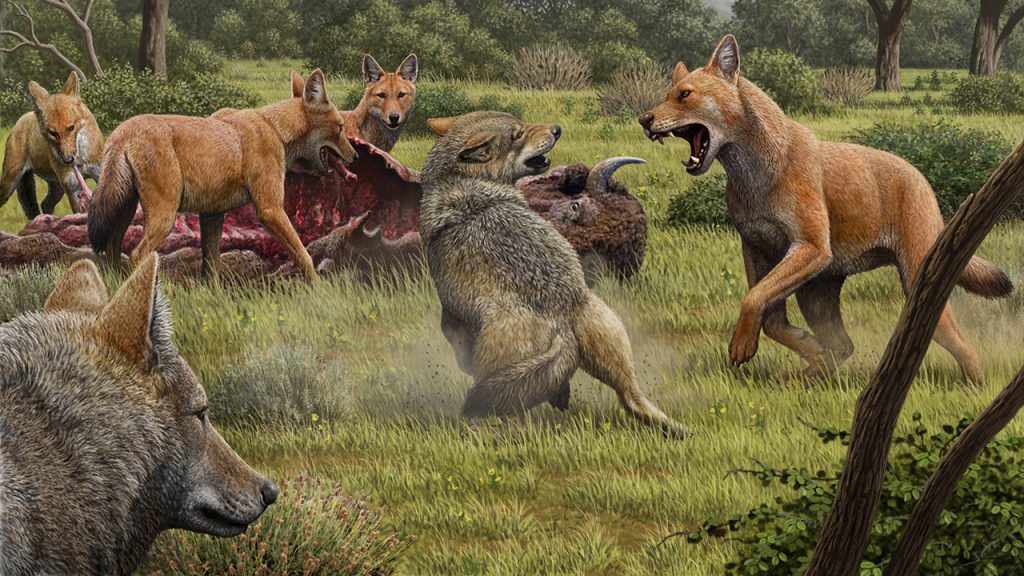
Paleontology (Science.org): Dire wolves, which died out with mammoths and saber-toothed cats at the end of the last ice age, were long thought to be close cousins of gray wolves. Now, the first analysis of dire wolf DNA finds they instead traveled a lonely evolutionary path: They are so different from other wolves, coyotes, and dogs that they don’t belong in the genus that includes these animals.
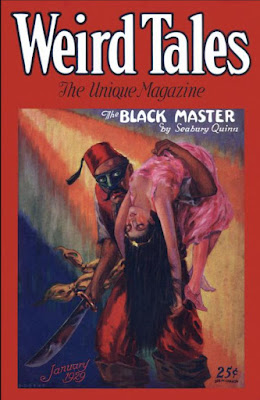
Robert E. Howard (Paperback Warrior): One of Robert E. Howard’s most iconic characters, along with Bran Mak Morn, Conan, and Kull, is Solomon Kane. The character’s first published appearance was in a short story called “Red Shadows”, which was published in the August, 1928 issue of Weird Tales. Mixing sword-and-sorcery and horror, Howard’s Solomon Kane stories feature a late 16th century Puritan who adventures around the world fighting evil.
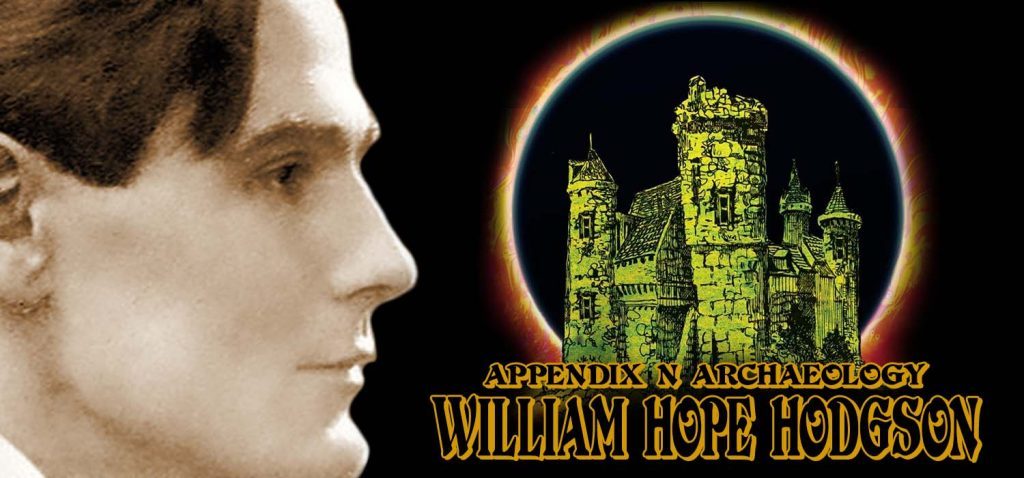
Horror (Goodman Games): We begin with a name that might not be familiar to all weird fiction fans but was certainly known by Gary Gygax—William Hope Hodgson. Hodgson was critically praised during his lifetime, but his works fell out of the public eye in the years following his death. Even today, Hodgson remains a peripheral figure to genre fans with few being familiar with his work.
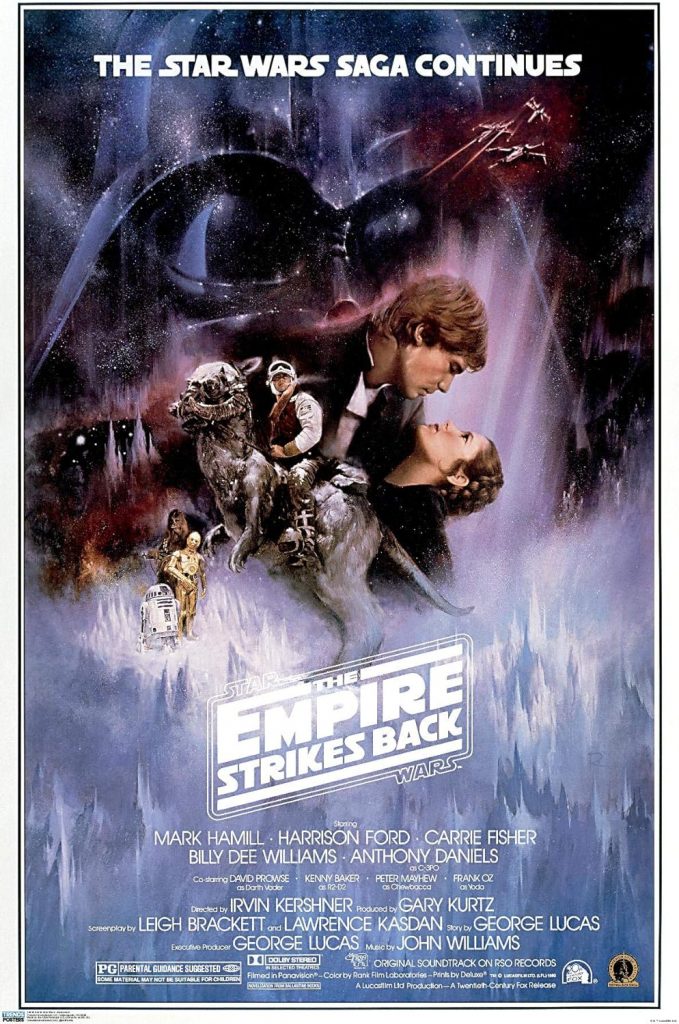
Art (Art of the Movies): Roger Karl Kastel was born in White Plains, New York on 11th June, 1931. Both parents painted and perhaps inevitably, their son developed a keen interest in art, picking up a pencil and paper whenever he could.
Fantasy Round Up (Tule Fog Press): Happy Thanksgiving! May God bless you and yours and may you have a fantastic holiday season beginning with this wonderful weekend of giving thanks to the Creator of all good things. Not sure what’s going on in this photo, but heh, whatever works! Carve away anyway you can, I suppose. (grin) Now on with the show!
Pulp (Pulp Pipe Poetry): Fans of pulp fiction gravitate to the heroic characters and whacky plots, not just in their original magazine form, but in other adaptations such as paperbacks, comic books, films, and radio plays. People read the pulps for their extravagant plots and exotic locales, but they stayed for larger-than-life characters, like The Shadow, The Spider, and Doc Savage.
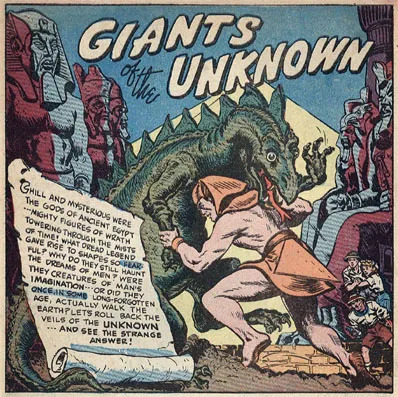
Comic Books (Dark Worlds Quarterly): In 1952, Frank Frazetta drew the first issue of Thun’Da King of the Congo, showing the right way to do comics about lost worlds. The editors foolishly wanted yet another jungle lord comic and put the kibash on the prehistoric stuff. Frank quit. His efforts have been honored by fans of that particularly mix of fantastic elements I call “Cavemen & Dinosaurs” but he wasn’t the only one using them in the Golden Age.
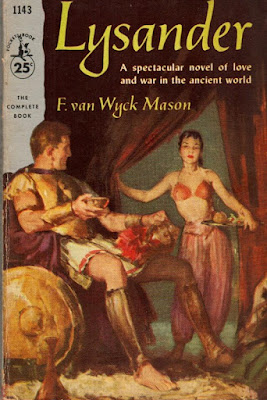
Fiction (Rough Edges): LYSANDER is a historical adventure novel by F. van Wyck Mason published as a paperback original by Pocket Books in 1957 with a cover by James Meese. That’s my copy in the scan. Mason was an old pulpster, of course, and this novel is an expansion of his serial “Lysander of Chios” serialized in ARGOSY in June and July of 1935.
D&D (DM David): In 1997 Wizards of the Coast bought Dungeons & Dragons publisher TSR, rescuing the company from bankruptcy. New D&D head Ryan Dancey looked for ways to turn the game into a healthy business. Dancey saw fan contributions as an enhancement to the D&D community that strengthened the game’s place in the market. Support from fans and from third-party publishers encouraged more people to play D&D. Dancey wrote, “This is a feedback cycle—the more effective the support is, the more people play D&D. The more people play D&D, the more effective the support is.”
D&D (Grognardia): Issue #81 (September/October 1977) of Campaign magazine is notable for its lengthy overview/review of Dungeons & Dragons, written by Len Kanterman (of Starships & Spacemen fame) and Charles Elsden. The entire article is worthy of extended examination – and I plan to do just that over the course of several upcoming posts – but I thought a section toward the end might elicit some commentary. Dubbed the “ten commandments of D&D,” they represent the authors’ advice to traditional wargamers playing the game for the first time.
Art (Dark Worlds Quarterly): What I do want to talk about is one of Burroughs’ best lion look-a-likes, the banth, the Barsoomian version of the lion. Ed described it for the first time in his second Martian novel, The Gods of Mars (All-Story, January-May 1913):
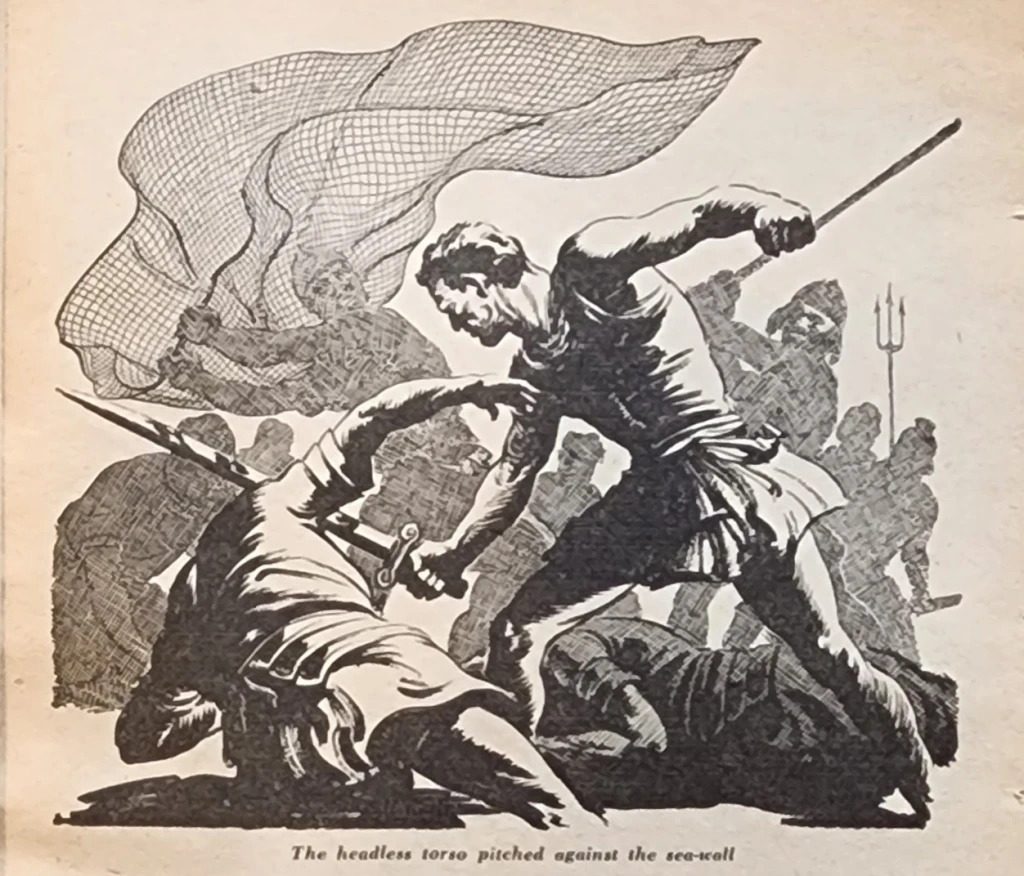
Pulp (Sprague de Camp Fan): Probably old news for most. Conan the Cimmerian appears in this story. But he is on Mars. The main character is Lee Thorsten. But he is in the body of Theseus. (The Greek hero who killed The Minotaur.) And Thorsten/Theseus is on Mars as well. So is the Minotaur! Let’s take a look at this convoluted “Conan” adventure.
Fiction (Auron MacIntyre): George Orwell’s “1984” is the most well-known dystopian novel, but its ubiquity has failed to prevent modern governments from marching toward totalitarianism. I discuss why Orwell’s warnings failed and point to other novels that serve as a more effective warnings against our current managerial regime.
Games (Wertzone): As part of N7 Day – an annual celebration of the franchise derived from the N7 special forces group in the video games – BioWare released a series of text and video bursts teasing a new clip. Once fans had done some detective work, the full clip was posted as above. The accompanying text (in the original files) suggests that the next game in the series takes place in or after the year 2819, the year that Mass Effect: Andromeda took place in.
Games (Bounding Into Comics): CD Projekt Red, the video game developer behind The Witcher franchise, announced they are developing a mod editor for The Witcher 3: Wild Hunt.
Tolkien (Notion Club Papers): Transcarnation may be a neologism: that is, a word here invented by Tolkien; which probably was intended to convey the idea of a soul transferring from one body to another without death.
Popular Culture (Aureus Press): Cultural narratives, such as mythology and shared history, are the genetic code of a society. This mythological DNA structure determines the shape of beliefs and modes of being of the people who live out the ideals of those myths. Throughout American culture right now, we are seeing an “overcoding” of cultural myths and popular media.
Literature (Liberty Fund): Milton refrained from writing further political prose and focused on composing his celebrated epic poem Paradise Lost (1667; revised twelve-book edition, 1674), which focuses on Satan’s rebellion against God the Father and his Son as well as the creation, fall, and anticipated redemption of Adam and Eve, concluding with the first couple’s expulsion from Eden.

Review (Ruined Chapel): The Matrioshka Divide is a throwback to the Golden Age of science fiction, in the tradition of Heinlein and Asimov, where advanced spacefaring technology is used to explore political and philosophical ideas.
RPG (Monsters & Manuals): What defines a ‘bad’ monster? For me, it generally has at least one of these three qualities. First, it shatters verisimilitude by being either ‘jokey’ or just really hard to visualise or imagine. Second, it has some nuclear-grade special ability that can only really be avoided or circumvented by a successful saving throw rather than player intelligence. Third, it is just boring, usually because it is too much like a lot of other monsters, or because it has no obvious role beyond being a benevolent quest-dispenser or GMPC.

Review (Ruined Chapel): It’s set in the distant future, when everything can be copied; the matter rearranged. This includes human beings. It’s not at all unusual for a person to die, and a new copy to be “instantiated” from the data stored in some central insurance system. Cosmetic alterations of all sorts can be performed instantaneously and at will.

Science Fiction (Vintage Pop Fictions): Harry Harrison’s science fiction novel The Stainless Steel Rat was published in 1961, although it drew on two earlier novelettes, The Stainless Steel Rat (1957) and The Misplaced Battleship (1960), which had appeared in the pulp magazine Astounding. A sequel would appear in 1970, to be followed by another ten books in the series.
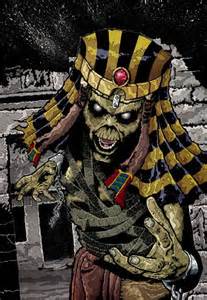
RPG (Fantasy Role Playing Planes): Mummies, and ghouls are common threats found in many types of RPG games. Unfortunately, it’s far too easy for the GM to roleplay them in a simplistic manner, as simple monsters to vanquish, giving them no backstory or interest, and an opportunity for world building is lost. But by giving them unique places to be, interesting attributes, and different causes of creation they can truly become the threats they should be.
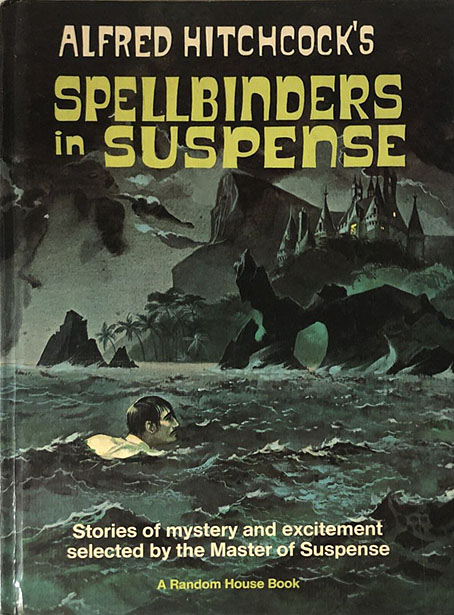
Anthologies (John Coult Hart): I watched Alfred Hitchcock’s The Birds again recently, after which I went looking for the contents list of the collection where I first read Daphne du Maurier’s story. The book in question, Alfred Hitchcock’s Spellbinders in Suspense, is one of the many anthologies that used the director’s name to lure potential purchasers, even though Hitchcock didn’t choose any of the stories and didn’t write any of the introductory notes or mini essays that these volumes usually contain.
Games (Walker’s Retreat): That’s just Rogue Trader. Baldur’s Gate 3 is another videogame that can wholly replace tabletop gaming for most prospective players doing Conventional Play; no DM fuckery, no scheduling, nothing right out of Neckbeardia videos about social retardation at the table or other anti-social faggotry, and no pressure to perform because you’re not playing in a team- you are in command or on your own. Divinity, Grim Dawn, Wasteland– all are preferable to Conventional Play for most prospects.
Weird Tales (Tellers of Weird Tales): Other early contributors to Weird Tales were also Poe fans and Poe admirers. Poe’s name was mentioned frequently in early letters to “The Eyrie,” including in the very first one, submitted by Anthony M. Rud (1893-1942), author of the very first cover story as well and published in that same first issue, March 1923. Rud, then, was the first reader of Weird Tales to mention Poe in its pages. Many others followed in their letters to “The Eyrie,” including:
Please give us your valuable comment